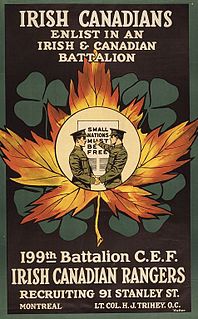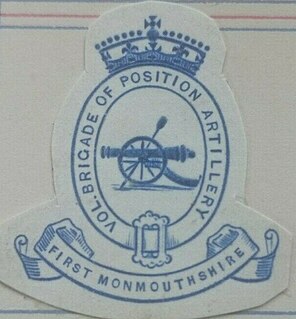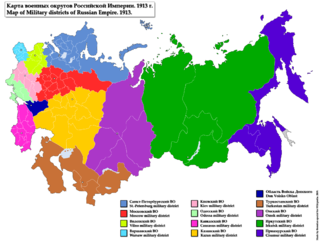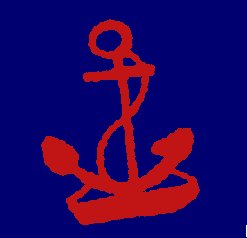 W
WThe I ANZAC Corps was a combined Australian and New Zealand army corps that served during World War I.
 W
WThe 2nd King Edward's Horse was a cavalry regiment of the British Army, formed in 1914, which saw service in the First World War. It was formed of British colonial citizens who were in Britain at the start of the war.
 W
WThe East Lancashire Royal Engineers was a Volunteer unit of Britain's Royal Engineers raised in Manchester in 1901. It became the engineer component of the 42nd Division of the Territorial Force, seeing service in Egypt, at Gallipoli and on the Western Front during World War I. In World War II it was in the Dunkirk evacuation with 42nd Division, and then converted to the armoured assault engineer role ('Funnies') in 79th Armoured Division in North West Europe. Its duplicate unit served in Tunisia and Italy. The unit continues today as part of 75 Engineer Regiment in the Army Reserve.
 W
WThe Hampshire Yeomanry was a yeomanry cavalry regiment formed by amalgamating older units raised between 1794 and 1803 during the French Revolutionary Wars. It served in a mounted role in the Second Boer War and World War I, and in the air defence role during and after World War II. The lineage is continued by 295 Battery and 457 Battery, batteries of 106 (Yeomanry) Regiment Royal Artillery, part of the Army Reserve.
 W
WThe Devonshire Regiment was a line infantry regiment of the British Army that served under various titles and served in many wars and conflicts from 1685 to 1958, such as the Second Boer War, the First World War and the Second World War. In 1958 the regiment was amalgamated with the Dorset Regiment to form the Devonshire and Dorset Regiment which, in 2007, was amalgamated with the Royal Gloucestershire, Berkshire and Wiltshire Regiment, the Royal Green Jackets and The Light Infantry to form a new large regiment, The Rifles.
 W
WThe 12th Army was a field army of the Imperial Russian Army during World War I that fought on the Eastern Front.
 W
WThe 12th Army Corps was an Army corps in the Imperial Russian Army.
 W
WThe Devonshire Regiment was a line infantry regiment of the British Army that served under various titles and served in many wars and conflicts from 1685 to 1958, such as the Second Boer War, the First World War and the Second World War. In 1958 the regiment was amalgamated with the Dorset Regiment to form the Devonshire and Dorset Regiment which, in 2007, was amalgamated with the Royal Gloucestershire, Berkshire and Wiltshire Regiment, the Royal Green Jackets and The Light Infantry to form a new large regiment, The Rifles.
 W
WThe 5th Battalion, Lincolnshire Regiment, was a volunteer unit of Britain's Territorial Army from 1900 until 1967, serving as infantry on the Western Front during the First World War and as an air defence unit during and after the Second World War.
 W
WThe Devonshire Regiment was a line infantry regiment of the British Army that served under various titles and served in many wars and conflicts from 1685 to 1958, such as the Second Boer War, the First World War and the Second World War. In 1958 the regiment was amalgamated with the Dorset Regiment to form the Devonshire and Dorset Regiment which, in 2007, was amalgamated with the Royal Gloucestershire, Berkshire and Wiltshire Regiment, the Royal Green Jackets and The Light Infantry to form a new large regiment, The Rifles.
 W
WThe 16th Brigade was an infantry brigade in the Australian Army. First raised in 1912 as a Militia formation to provide training under the compulsory training scheme, the brigade was later re-raised as part of the First Australian Imperial Force during World War I. Its existence was short lived, as it was disbanded after about six months, before it could be committed to the fighting on the Western Front. Raised again in 1939 for service during World War II, the brigade was deployed to the Middle East in early 1940 and subsequently saw action in the Western Desert and in Greece in 1941. In 1942, it returned to Australia in response to Japan's entry into the war, and later the brigade played a prominent role in the Kokoda Track campaign and at Buna–Gona in Papua. Withdrawn to Australia in early 1943, the 16th Brigade was re-organised and received many replacements from disbanding formations, but it was not recommitted to combat operations until late in the war. In 1944–1945, the brigade was committed to the Aitape–Wewak campaign in New Guinea. After the war, the brigade was disbanded in 1946. Today, its name is perpetuated by the 16th Aviation Brigade which was raised on 2 April 2002.
 W
WThe XVII Reserve Corps / XVII RK was a corps level command of the German Army in World War I.
 W
WThe 29th Indian Brigade was an infantry brigade of the British Indian Army that saw active service with the Indian Army during the First World War. Formed in October 1914, it raided Sheik Saiad en route to Egypt, defended the Suez Canal in early 1915, before taking part in the Gallipoli Campaign. On returning to Egypt it acted as an independent formation being broken up in June 1917.
 W
WThe 1st Hull Heavy Battery was a unit of the British Army in World War I recruited from Kingston upon Hull in the East Riding of Yorkshire. It was the first unit of the Royal Garrison Artillery raised for 'Kitchener's Army' and it went on to serve as a howitzer battery in the East African Campaign and as a siege battery on the Western Front.
 W
WThe 61st Battalion was an infantry battalion of the Australian Army. It was originally raised in 1917 during the First World War but was disbanded the same year without seeing active service. Later it was re-raised as a part of the Militia in 1938 in Brisbane, Queensland. Upon the outbreak of the Second World War they initially undertook garrison duties in Australia, however, in 1942 they were deployed to New Guinea where they took part in the Battle of Milne Bay, during which the Japanese were defeated for the first time in a major land battle. In late 1943, the 61st Battalion was withdrawn back to Australia for a period of re-organisation and training before being deployed overseas again in late 1944. This time they were deployed to Bougainville, where the Australian 3rd Division had taken over from the American garrison and the battalion joined the drive towards the Japanese stronghold at Buin in the south of the island. Following the end of the war, the 61st Battalion was disbanded as part of the demobilisation process on 8 January 1946.
 W
WThe 133rd Battalion, CEF was a unit in the Canadian Expeditionary Force during the First World War.
 W
WThe 1st Hull Heavy Battery was a unit of the British Army in World War I recruited from Kingston upon Hull in the East Riding of Yorkshire. It was the first unit of the Royal Garrison Artillery raised for 'Kitchener's Army' and it went on to serve as a howitzer battery in the East African Campaign and as a siege battery on the Western Front.
 W
WThe 33rd Divisional Artillery, popularly known as the Camberwell Gun Brigade, was a Royal Artillery force raised as part of 'Kitchener's Army' in early 1915. Recruited in the Borough of Camberwell, South London, the units served with the 'Pals battalions' of the 33rd Division on the Western Front for three years. They also supported other formations when 33rd Division was out of the line. The batteries saw action at the Somme, Arras, and Ypres, suffering heavy casualties. They were particularly distinguished defending against the German spring offensive of 1918, and continued through the victorious Allied Hundred Days Offensive.
 W
WThe 39th (Deptford) Divisional Artillery was a Royal Artillery force raised as part of 'Kitchener's Army' in early 1915. Recruited in Deptford, South London, the units served with the 'Pals battalions' of the 39th Division on the Western Front for two years. They saw action at the Somme, Ypres, and the German spring offensive, including the Battle of the Avre, described as 'one of the finest artillery stories of the whole war'. The units then operated as an independent artillery formation during the Allied Hundred Days Offensive.
 W
WThe 198th Alexander Nevsky Infantry Regiment was an infantry regiment of the Russian Imperial Army that existed from 1811 until the end of World War I and the Russian Revolution. It was named after the medieval Kievan Rus' prince and military leader Alexander Nevsky.
 W
WThe 199th Battalion, CEF was a unit in the Canadian Expeditionary Force (CEF) during the First World War.
 W
WThe 1st Midlothian Artillery Volunteer Corps was formed in 1859 as a response to a French invasion threat. Originally it served as garrison and heavy artillery but transferred to the Territorial Force (TF) in 1908 as field artillery, in which role it served through both World Wars. In World War I it fought on the Western Front with 51st (Highland) Division. In World War II it briefly saw service in France after Dunkirk and was with Eighth Army in North Africa and Italy. Its wartime duplicate regiment served with distinction in the Burma Campaign. Postwar the regiment continued in existence until amalgamation in 1967.
 W
W70th Siege Battery, was a heavy howitzer unit of the Royal Garrison Artillery (RGA) formed during World War I. It saw active service on the Western Front at the Somme, Vimy Ridge and Cambrai, against the German spring offensive, and in the final Hundred Days Offensive.
 W
W67th Siege Battery, was a heavy artillery unit of the Royal Garrison Artillery (RGA) formed in Scotland during World War I. It saw active service on the Western Front at the Somme, Arras, Ypres, and in the final Hundred Days Offensive.
 W
WThe 1st Suffolk & Harwich Volunteer Artillery, later the Essex & Suffolk Royal Garrison Artillery was an auxiliary coastal artillery unit of the British Army first raised in 1899. It defended the ports and naval bases around the estuaries of the Rivers Orwell and Stour. Although the unit saw no active service, it supplied trained gunners to siege batteries engaged on the Western Front during World War I. It was greatly expanded in World War II to defend the invasion-threatened East Anglian Coast from Harwich to Great Yarmouth. Postwar it continued in the coast and air defence roles until it disappeared in a series of amalgamations from the 1950s.
 W
W171st Siege Battery was a unit of Britain's Royal Garrison Artillery (RGA) formed during World War I. It served on both the Western Front, including the Battles of Arras and Passchendaele, and the Italian Front, where it participated in the repulse of the Austrian Summer Offensive of 1918 and the crushing victory at Vittorio Veneto.
 W
W114th Siege Battery, was a heavy howitzer unit of the Royal Garrison Artillery (RGA) formed in Wales during World War I. It saw active service on the Western Front at the Somme, Vimy Ridge and Ypres, against the German spring offensive, and in the final Hundred Days Offensive.
 W
WThe 2nd Glamorganshire Artillery Volunteers was a part-time unit of the British Army that defended the coast of South Wales from 1890 to 1942. Although it never saw action in its coastal defence role, it formed several siege batteries of heavy howitzers for service on the Western Front and Italian Front in World War I.
 W
W123rd Siege Battery was a unit of Britain's Royal Garrison Artillery (RGA) formed in 1916 during World War I. It served on the Western Front, including the Battles of Arras, Passchendaele, Cambrai and the crushing victories of the Allied Hundred Days Offensive in 1918. Post war, the battery was disbanded in 1919.
 W
WThe 172nd Siege Battery was a unit of Britain's Royal Garrison Artillery (RGA) raised during World War I. It manned heavy howitzers on the Western Front and Italian Front from 1916 to 1918.
 W
W95th Siege Battery was a heavy howitzer unit of Britain's Royal Garrison Artillery (RGA) raised during World War I. It manned heavy howitzers on the Western Front from 1916 to 1918, beginning with the Attack on the Gommecourt Salient on the First day on the Somme. It then served at Vimy Ridge and Ypres, against the German Spring Offensive and in the final Allied Hundred Days Offensive.
 W
WThe 121st Siege Battery was a unit of Britain's Royal Garrison Artillery (RGA) raised during World War I. It manned heavy howitzers on the Western Front from 1916 to 1918.
 W
WThe 1st Midlothian Artillery Volunteer Corps was formed in 1859 as a response to a French invasion threat. Originally it served as garrison and heavy artillery but transferred to the Territorial Force (TF) in 1908 as field artillery, in which role it served through both World Wars. In World War I it fought on the Western Front with 51st (Highland) Division. In World War II it briefly saw service in France after Dunkirk and was with Eighth Army in North Africa and Italy. Its wartime duplicate regiment served with distinction in the Burma Campaign. Postwar the regiment continued in existence until amalgamation in 1967.
 W
WThe 1st Monmouthshire Artillery Volunteer Corps was a unit of Britain's Volunteer Force raised in 1860 from Monmouthshire in the Welsh borders. After transfer to the Territorial Force it served with the 53rd (Welsh) Division in Palestine in World War I and in North West Europe in World War II. Its successors serve with today's Army Reserve.
 W
WThe 1st Devonshire Artillery Volunteers and its successor units served in the British Army's Reserve Forces from 1859 to 1961. During World War I it carried out garrison duty in British India but went on to see active service in the Third Anglo-Afghan War. Converting to an air defence role before World War II its units participated in the Norwegian campaign and the Dunkirk evacuation, the Battle of Britain and then the campaigns in North Africa, Italy, and Burma
 W
WThe Admiralty War Staff was the former senior naval staff operational planning organisation within the British Admiralty that existed from 1912 to 1917. It was instituted on 8 January 1912 by Winston Churchill in his capacity as First Lord of the Admiralty and was in effect a war council whose head reported directly to the First Sea Lord. After the First World War ended, the War Staff was replaced by the Admiralty Naval Staff department.
 W
WThe Amur Military District or Priamur Military District was a Military district of the Russian Empire, which existed between 1884 and 1919.
 W
WArmee-Abteilung Woyrsch was an army level command of the German Army in World War I. It served on the Eastern Front throughout its existence.
 W
WBrigade I of the Polish Legions was a unit of Austro-Hungarian Army, manned by Poles under Austrian occupation, part of the Polish Legions in World War I, existing from 1914 to 1917.
 W
WBrigade III of the Polish Legions was a unit of the Austro-Hungarian Army, manned by Austrian Poles. It was formed in 1915, existed till 1917, and was a part of the Polish Legions in World War I.
 W
WThe Caucasian Native Cavalry Division, or "Savage Division" was a cavalry division of the Imperial Russian Army. Formed on 23 August 1914, it was transformed into the Caucasian Native Cavalry Corps on 4 September 1917 before being dissolved several months later. It was composed mostly of Muslim volunteers from among various Peoples of the Caucasus. It took part in World War I, commanded by Grand Duke Michael Alexandrovich of Russia, younger brother of Emperor Nicholas II.
 W
WThe Desert Column was a First World War British Empire army corps which operated in the Sinai and Palestine Campaign from 22 December 1916. The Column was commanded by Lieutenant General Philip W. Chetwode and formed part of Eastern Force. When Chetwode took command of Eastern Force after the Second Battle of Gaza, Harry Chauvel took command and oversaw the expansion of the column to three divisions.
 W
WThe II ANZAC Corps was an Australian and New Zealand First World War army corps. Formed in early 1916 in Egypt in the wake of the failed Gallipoli campaign, it initially consisted of two Australian divisions, and was sent to the Western Front in mid-1916. It then took part in the fighting in France and Belgium throughout 1916 and 1917, during which time it consisted of New Zealand, Australian and British divisions. In November 1917, the corps was subsumed in to the Australian Corps, which concentrated all five Australian infantry divisions. After this, the corps was reformed as the British XXII Corps.
 W
WThe Imperial Russian Air Service was an air force founded in 1912 for Imperial Russia. The Air Service operated for 5 years and only saw combat in World War I before being reorganized and renamed in 1917 following the Russian Revolution. It formed what would later become the Soviet Air Forces.
 W
WHis Majesty Lifeguard Jaeger Regiment, short also Lifeguard Jaeger Regiment, was a Jäger regiment of the Russian Imperial Guard from 1796 to 1917.
 W
WThe Royal Australian Naval Bridging Train was a unique unit of the Royal Australian Navy. It was active only during the First World War, where it served in the Gallipoli and the Sinai and Palestine Campaigns. The Train was formed in February 1915 and stood down in May 1917. Throughout its existence, it was composed of Royal Australian Naval Reservists under the command of Lieutenant Commander Leighton Bracegirdle. Normally under the command of the British IX Corps, the Train also supported the I ANZAC Corps and Imperial Camel Corps in the defence of the Suez Canal.They were the only Australian naval unit serving in a European theatre of war. They were therefore bent on proving, both to the Royal Navy and to the British Army, that they could overcome any difficulties.
 W
WThe Russian Imperial Guard, officially known as the Leib Guard were military units serving as personal guards of the Emperor of Russia. Peter the Great founded the first such units following the Prussian practice in 1683, to replace the politically motivated Streltsy. The Imperial Guard subsequently increased in size and diversity to become an elite corps of all branches within the Imperial Army rather than Household troops in direct attendance on the Tsar. Numerous links were however maintained with the Imperial family and the bulk of the regiments of the Imperial Guard were stationed in and around Saint Petersburg in peacetime. The Imperial Guard was disbanded in 1917 following the Russian Revolution.
 W
WThe Special Corps of Gendarmes was the uniformed security police of the Imperial Russian Army in the Russian Empire during the 19th and early 20th centuries. Its main responsibilities were law enforcement and state security.
 W
WThe Volinsky Lifeguard Regiment, more correctly translated as the Volhynian Life-Guards Regiment, was a Russian Imperial Guard infantry regiment. Created out of a single battalion of Finnish Guard Regiment in 1817, the regiment took part in the Polish-Russian War of 1830–1831, the Crimean War, the January Uprising of 1863 and the First World War.